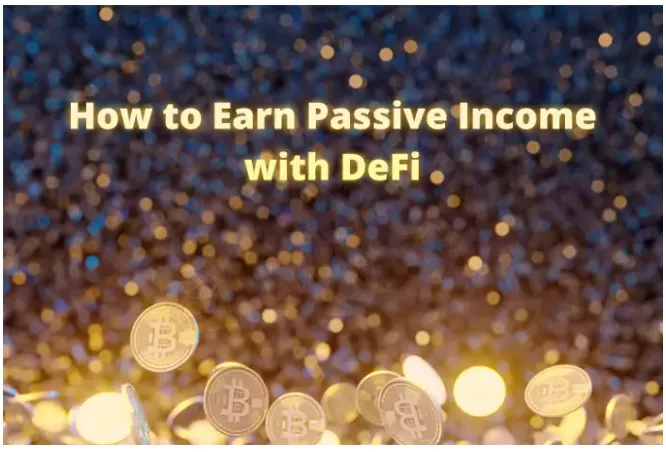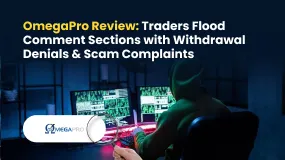简体中文
繁體中文
English
Pусский
日本語
ภาษาไทย
Tiếng Việt
Bahasa Indonesia
Español
हिन्दी
Filippiiniläinen
Français
Deutsch
Português
Türkçe
한국어
العربية
How to Earn Passive Income with DeFi
Abstract:Decentralized Finance, more commonly known as DeFi has started to draw much more interest as a wave of new protocols hit the crypto market.

Decentralized Finance
While Satoshi Nakamotos Bitcoin creation was to bring an alternative to fiat currency, DeFi is looking to take it one step further.
After the evolution of centralized finance in the crypto space, DeFi is looking to battle global finance and the long-established financial sector head-on.
As the name suggests, DeFi looks to bring a truly decentralized, community-driven financial services platform.
DeFi is designed to be both “Permissionless” and “Trustless” in a decentralized world akin to that of Bitcoin.
This is in contrast to the world of CeFi, where there are governance and control over the financial platforms.
As the market leaders look to innovate and deliver an alternative to the existing banking model, there are a number of ways in which crypto holders are able to generate income.
When considering the lack of KYC and AML requirements, due to the decentralized nature of DeFi, DeFi is not only targeting the banked but also the non-banked that is estimated to sit at around 1.7bn.
As is the case with more traditional financial products, investors have the option to generate active or passive income.
Active income would include the trading of assets available across DEX platforms, these being decentralized exchanges. Similar to trading cryptos and other asset classes, this is a hands-on practice and even more so in the volatile crypto world.
Passive income is just the opposite, where investors and crypto holders may earn income from cryptos held but are not being actively traded.
Passive Income
While DeFi is in its very early days, there are a number of ways in which investors can earn passive income. The entire reason for the existence of such platforms and products is to deliver liquidity to the DeFi space through incentivization.
Income-generating DeFi products currently include:
Yield farming
Liquidity mining
Staking
Decentralized Exchanges (“DEX”)
Unlike the CeFi space, there is also a low barrier to entry, supporting innovation that will be key in delivering an alternative financial services platform.
So, for those holding stablecoins looking to generate a steady income stream, the DeFi world offers just that.
Taking a closer look at the passive income products on offer:
Yield Farming
Yield farming is the generation of yield from crypto assets.
The product is comparable to bank deposits, fixed-term deposits, and even government bonds.
Investors deposit fiat money into financial institutions via bank deposits and fixed deposits, which gives the institution liquidity. Investing in government bonds gives governments liquidity. The liquidity is then used to generate growth by the institution or government.
Not only can the community generate income from crypto assets already held. Yield farmers can also borrow crypto and generate income. This is profitable when interest rate differentials are aligned in favor of the borrower.
Yield farmers can farm yield from DeFi money markets, liquidity pools, and incentives.
As an example, a yield farmer places 10,000 USDT into a DeFi protocol, delivering liquidity to the platform. The protocol gives the yield farmer a reward for depositing the USDT.
The yield farmer then takes the rewarded USDT or other tokens that may be given and deposit it into a DeFi liquidity pool accepting USDT or the token received. The yield farmer then receives a yield kicker from the incentives.
While at present there is an element of active management of assets, the DeFi space is evolving. Currently, yield farmers are manually in search of the best yields on offer. There are new protocols on offer, however, that can do the work for you. These are known as Robo-Advisors or Robot yield toppers.
Smart contract systems use “Oracles” in order to automatically transfer Robo-managed tokens to protocols offering the highest yields for a fee.
“Oracles” are services that provide “off-chain” data to smart contracts. “Off-chain” data is typically market prices of assets and world events, such as sports scores, weather, etc.
Revenue Streams
The types of returns that a yield farmer can earn are as follows:
Capital growth: Assets, fees, and rewards may be in stablecoins or non-stablecoins. Capital growth during a staking period is a passive income source. There is a risk, however, of “Impermanent Loss”.
“Impermanent Loss” is an opportunity cost incurred between supplying liquidity to an AMM pool vs simply holding the tokens in a wallet. The loss happens when asset prices diverge from original levels when tokens were first deposited.
Additional income streams include:
Token rewards
Transaction fees
Liquidity Mining
The 2nd step that yield farmers take in yield farming is liquidity mining.
From a protocol perspective, a token issuer or DEX rewards liquidity miners for providing liquidity to a specific token.
Here token holders deposit collateral into a liquidity pool offered by an automated market maker, (“AMM”).
Once you have identified a mining pool that accepts your idle tokens, simply stake your token in exchange for incentives. Incentives are normally tokens that holders can later exchange on a DEX.
Its worth noting that liquidity pools tend to offer better yields than money markets. There is a greater risk, however, which justifies the greater reward.
Automated Market Makers
Automated market makers, more commonly known as AMMs, offer the liquidity pools to enhance farming yields.
In essence, the community trades with smart contracts and not with other community members.
AMMs are smart contracts that create liquidity pools, typically traded by an algo or “Robots” rather than order books.
From a DeFi perspective, AMMs are pivotal in its evolution. The liquidity is a must for the DeFi space to continue to evolve and deliver new protocols and products to the community.
The Risks
As is the case with any investment, yield farming is not risk-free.
Such risks stem from:
Smart Contracts: Developers cant change smart contracts once the rules are baked into the protocol. This makes bugs permanent and could result in the material loss of assets.
Exchange Rates: Asset price volatility is unavoidable. As previously mentioned, “Impermanent Loss” is one risk related to exchange rates.
Price Oracles: Price-feed providers rely upon the quality of the data. That leaves “Price Oracles” exposed to price tampering. In an automated world, there are no audits to verify the accuracy of the data.
Hacks: Thieves and hackers target AMMs, particularly in the early days.
In conclusion
For the crypto market evolution, the most enticing element of DeFi must the offering of financial services without KYC and AML requirements. The DeFi community can enjoy full anonymity, while also enjoying the products on offer than range from trading to taking out loans…
Passive income is a key element, as the DeFi world innovates to even greater automation.
Investing does not come without its own risks, however. In the Trustless and Permissionless world of DeFi, there is no governance to identify the good from the bad.
As we saw in the boom days of crypto, however, this will eventually stabilize. Until then, investors need to tread cautiously when investing in the DeFi space.
Recommendations include:
Try to avoid investing in unaudited protocols unless you are fully aware of the risks and can stomach the loss.
Dont invest money that you cannot afford to lose. There are Ponzi schemes abound.
Do some research and identify protocols that are likely to exist for the longer term. The longer the vesting periods and incentives for communities to remain in place for the long haul the better.

Disclaimer:
The views in this article only represent the author's personal views, and do not constitute investment advice on this platform. This platform does not guarantee the accuracy, completeness and timeliness of the information in the article, and will not be liable for any loss caused by the use of or reliance on the information in the article.
Read more

The 5%ers Review: Is it a Scam or Legit? Find Out from These Trader Comments
Did you face reduced leverage and hiked fees without any explanation from The 5%ers broker? Do you find The 5%er rules strange for getting a funded account from this prop trading firm? Has the broker closed your trade inappropriately, preventing you from making gains in the forex market? All these allegations have dominated The 5%ers review segment online. Looking at this, the WikiFX team investigated and found some startling comments against the broker. In this article, we have shared those complaints. Read on!

BROKSTOCK Exposed: Traders Report Login Errors, Withdrawal Issues & Incompetent Customer Support
Is your BROKSTOCK trading account full of inefficiencies? Do the recurrent BROKSTOCK login errors prevent you from opening and shorting positions at a favorable price? Has the broker failed to honor your withdrawal requests? Do you face order execution price issues? Has the customer support service failed to resolve your queries? You are not alone! In this BROKSTOCK review article, we have shared some complaints that need a close introspection. Read on to explore them.

OmegaPro Review: Traders Flood Comment Sections with Withdrawal Denials & Scam Complaints
Has your deposit and withdrawal scenario worsened after the initial good experience at OmegaPro, a UK-based forex broker? Does the broker ask you to invest when withdrawing your funds? Did the broker officials trap you with their false promises of compound interest on your deposit? Have you found it impossible to transfer funds from your OmegaPro login to another broker’s account? Do you witness a lack of support when dealing with these unfortunate trading circumstances? These are no longer isolated complaints — they have allegedly become the reason for OmegaPro’s tarnished trust and reputation within the trading community. Read on as we share the OmegaPro review in this article.

Inzo Broker Review 2025: A Complete Look at Features, Costs and User Claims
Inzo Broker presents itself as a modern forex and CFD broker, started in 2021 and registered in Saint Vincent and the Grenadines. At first glance, it offers an attractive package for traders: access to the popular MetaTrader 5 (MT5) and cTrader platforms, different types of accounts for various budget levels, and a wide selection of assets to trade. These features are made to attract both new and experienced traders. However, a closer look shows a big difference between these advertised benefits and the real risks. The broker works under an offshore regulatory system, which gives limited protection to investors. More importantly, Inzo has collected many serious user complaints, especially about withdrawing funds and changing trading conditions unfairly. This mix of weak oversight and serious user claims creates a high-risk situation that potential clients must carefully think about. This review will break down these parts to give a clear, fact-based view.
WikiFX Broker
Latest News
BASF CEO: EU CO₂ Trading Is A "Destruction Mechanism" For European Industry
Is Fyntura a Regulated Broker? A Complete 2025 Broker Review
Zetradex Exposed: Withdrawal Denials, Account Freeze & Bonus Issues Hurt Traders
Is Forex Zone Trading Regulated and Licensed?
PINAKINE Broker India Review 2025: A Complete Guide to Safety and Services
Exness Restricted Countries List 2025 Explained
Is Uniglobe Markets Legit? A 2025 Simple Guide to Its Safety, Services, and User Warnings
Is Inzo Broker Safe or a Scam? An Evidence-Based Analysis for Traders
WikiEXPO Dubai 2025 “Welcome Party” Kicks Off Tonight!
He Trusted a WhatsApp Group and Lost RM659,000
Currency Calculator




